|
Centrip Editorial Board
Kumano Kodo Iseji Route: Exploring World Heritage Sites in Kumano

In the city of Kumano, Mie Prefecture, on the Kumano Kodo (a historical Japanese pilgrimage path) lies Matsumoto-toge Pass. The pass is filled with cobblestone walkways through a bamboo forest, making for a beautiful hiking path even for novices. In the past, pilgrims on this path would eagerly look forward to their destination, Ise Grand Shrine. Along the hike is a coastline with a collection of World Heritage sites such as Onigajo Cliffs, Shishi Iwa Lion Rock, Hana-no-iwaya Shrine, and Shichiri Mihama Beach. On the mountainside of the city is a spectacular view of Japan's most beautiful terraced rice paddies, Maruyama Senmaida.
With the opening of the Kumano-Owase Road in 2021, access from Nagoya has become easier—just a 2.5-hour drive. In this guide, we’ll show you how to explore Kumano City’s key attractions, focusing on the scenic Matsumoto-toge Pass section of the Kumano Kodo.
Recommended Sightseeing Spots in Kumano
Kumano Kodo: Matsumoto-toge Pass
If you’re hiking the Kumano Kodo for the first time, Matsumoto-toge Pass is a perfect place to start. This well-preserved section features the original stone paving and offers easy access to the trailhead. With a summit elevation of just 135 meters, it’s suitable even for casual hikers with minimal gear.
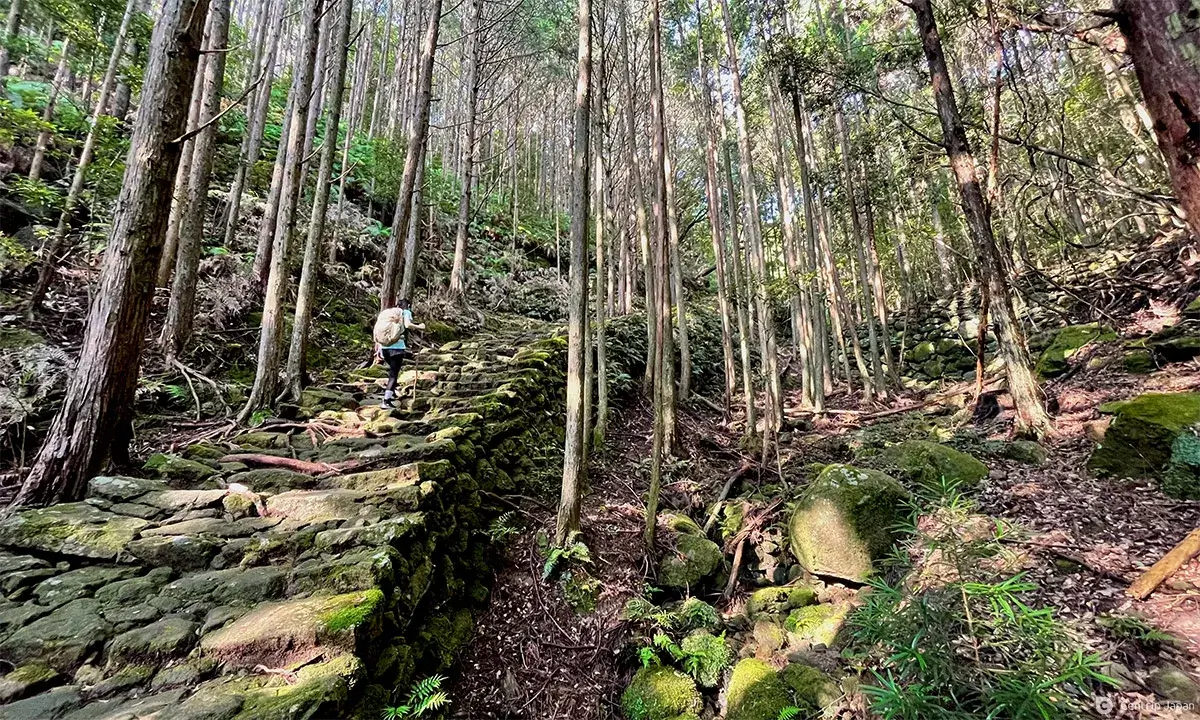 Walking along the Kumano Kodo
Walking along the Kumano Kodo
There are several hiking trails on the Matsumoto-toge Pass. We recommend the route starting from the Onigajo Center parking lot, climbing up the east side of the pass, through the pavilion, and returning to the Onigajo Center parking lot. It balances the hike with sightseeing and, with breaks, should take about 90 to 120 minutes.
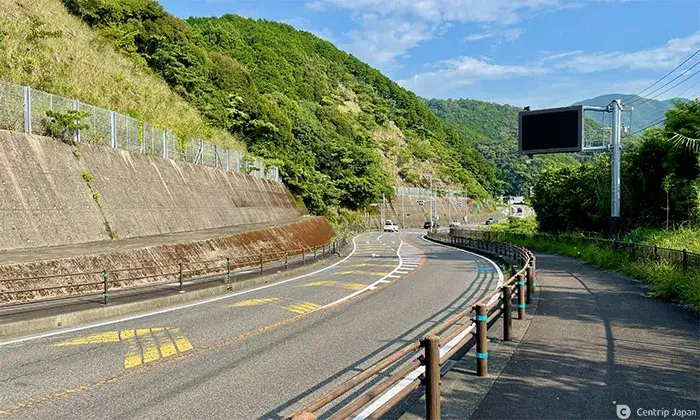 Leave the parking lot and walk along Route 42
Leave the parking lot and walk along Route 42
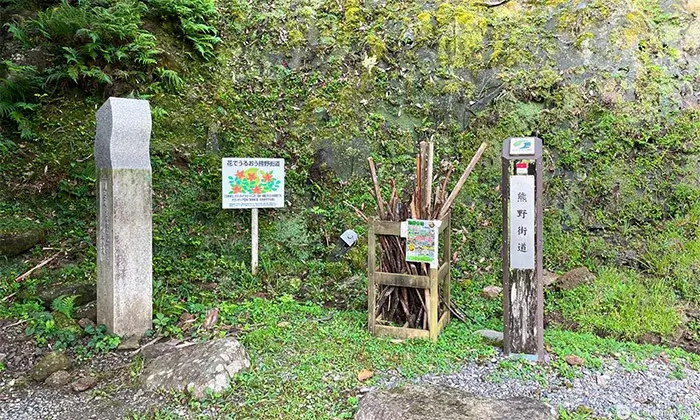 The east side of the Matsumoto-toge Pass, the start of the ascent
The east side of the Matsumoto-toge Pass, the start of the ascent
Onigajo Center is a sightseeing base in Kumano, located on Onigajo Island, a scenic spot with spectacular views of strange rock formations, and it has a free parking lot. The parking lot is connected directly to the hiking trail leading to Matsumoto-toge Pass.
Instead of using this entrance, head back to Route 42, and walk toward Owase. After crossing the first traffic light, you'll enter Matsumoto-toge Pass. Walking sticks for hikers are at the trailhead and returned at the Onigajo Center parking lot entrance.
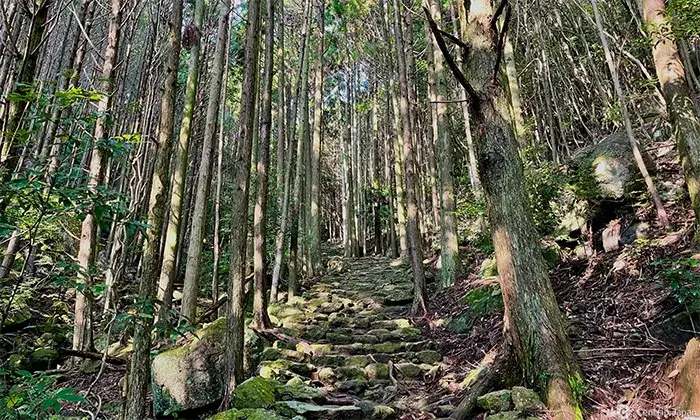 A cobblestone path appears immediately at the start of the climb.
A cobblestone path appears immediately at the start of the climb.
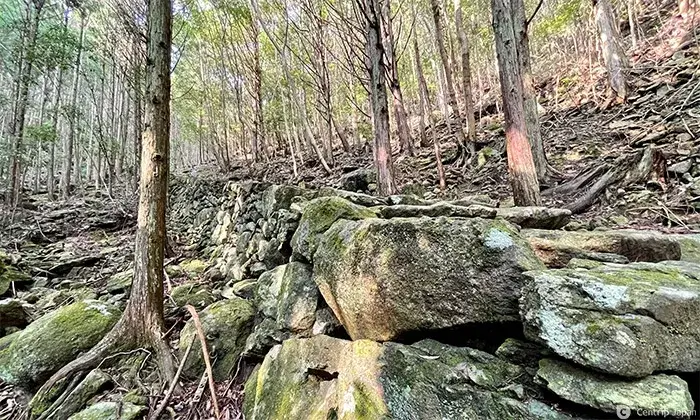 Layered cobblestones piled on top of each other
Layered cobblestones piled on top of each other
As soon as you start the hike, you will see the magnificent cobblestones that make you feel as if you have stepped back in time.
The cobblestones in this area date to the Edo period (1603-1867) and were made using a technique called nosuraranzo-zumi (Japanese for "piled up in layers"). A side view of the pavement shows how the stones are stacked layer upon layer like a stone wall. The Kumano region receives abundant, and this was how they prevented the path from being washed away by heavy rains.
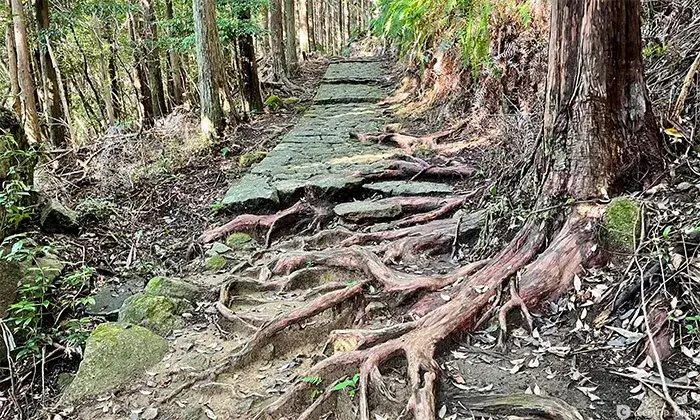 Newer cobblestones from the Meiji Era appear at the midpoint
Newer cobblestones from the Meiji Era appear at the midpoint
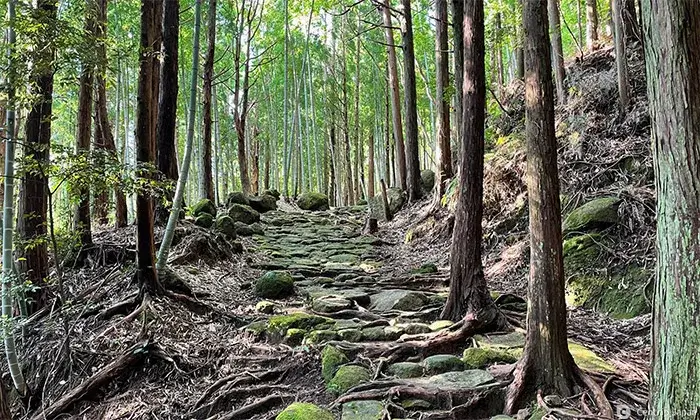 The top is around the bamboo grove.
The top is around the bamboo grove.
After climbing, you'll see a sign that reads "Matsumoto-toge Pass 03/07." This section has relatively new cobblestones from the Meiji era. Continue from there, and you will reach the top of Matsumoto-toge Pass when a bamboo grove comes into view.
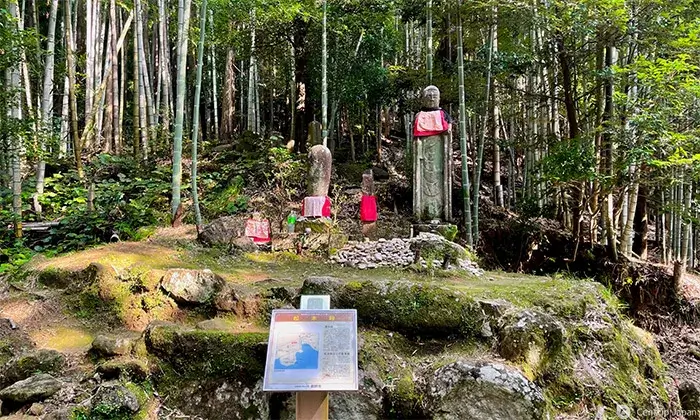 Jizo statue with bullet holes
Jizo statue with bullet holes
 The road splits at the top
The road splits at the top
At the top of the pass (where the road forks) is a Jizo statue. There is a story about how it was mistaken for a monster and shot with a gun. It still quietly watches over travelers. It takes about 20 to 30 minutes from the entrance to the top of the pass. There is a bench here for you to take a short rest.
From Matsumoto-toge Pass to Shichiri Mihama Overlook
From the top of Matsumoto-toge Pass, the road divides into Kinomotonoboriguchi and Oniga-jo Ruins. The original route of the Kumano Kodo continues down the pass to the gentle slopes of Hamakaido, but here, turn left in the direction indicated by the Oniga-jo Ruins sign.
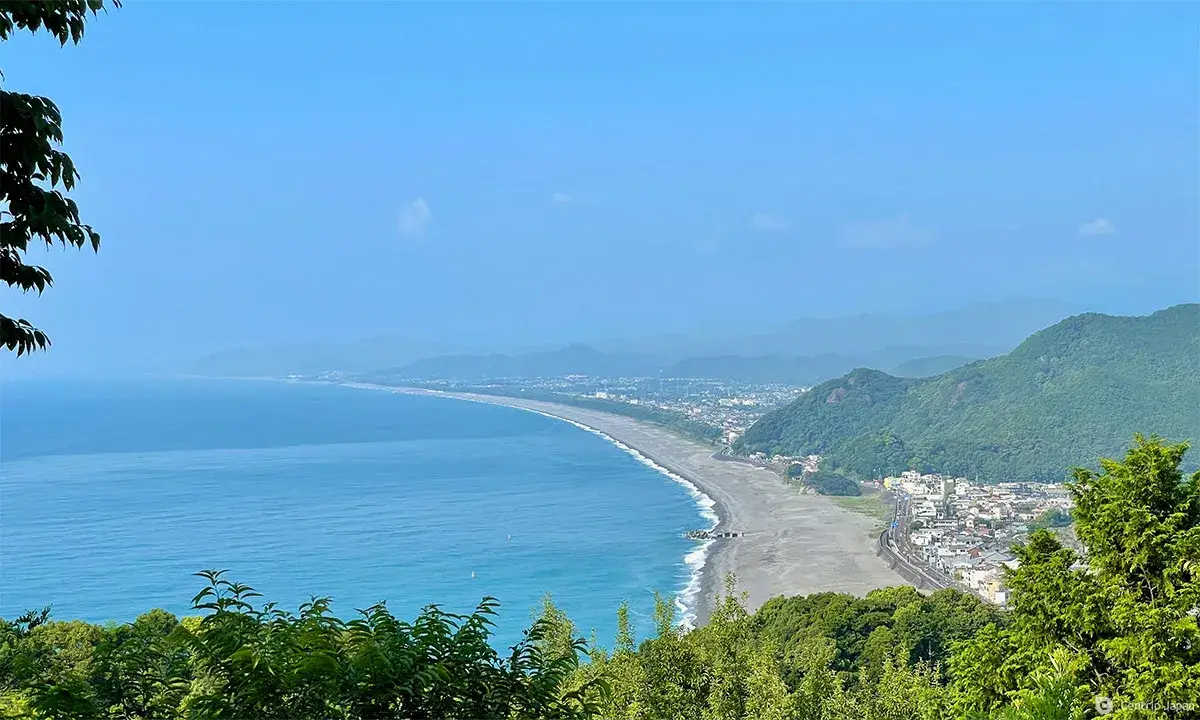 Shichiri Mihama coastline seen from the pavilion
Shichiri Mihama coastline seen from the pavilion
After a 10-minute walk along the forest road from the top of the pass, the view opens up, and you will see a pavilion. This pavilion is a famous scenic spot, offering a panoramic view of the beautiful coastline of Shichiri-Mihama, which stretches more than 20 kilometers to Shingu City in Wakayama Prefecture.
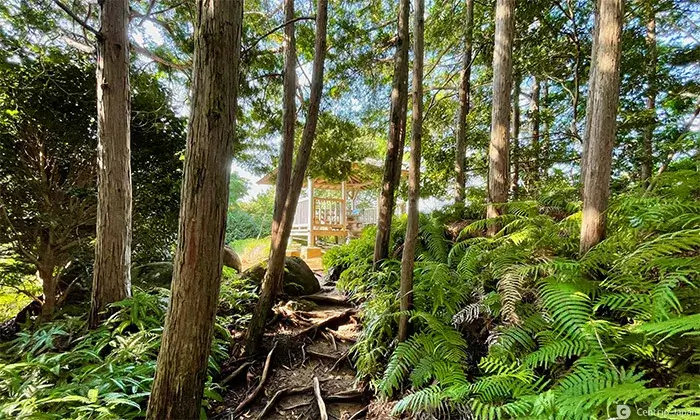 A pavilion at the end of the forest road
A pavilion at the end of the forest road
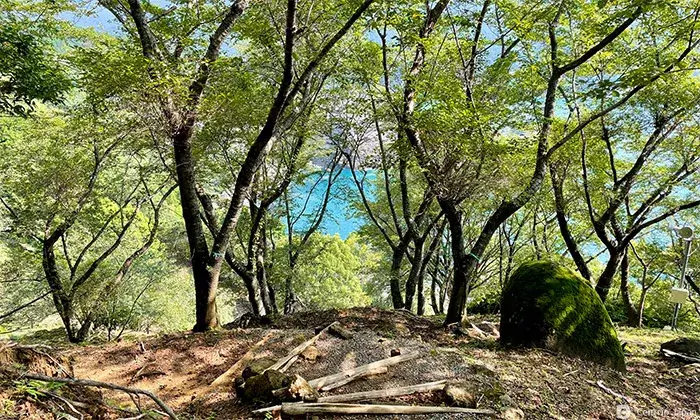 The ocean and a small fishing port through the trees
The ocean and a small fishing port through the trees
Proceeding from the pavilion, you reach the ruins of a mountain castle. Few traces remain, but the area is a plaza with a small bench.
Walk down the stairs, taking in the view of the blue ocean and small fishing port beyond the trees. Soon you will be back at the parking lot of Onigajo Center. It takes about 30 to 40 minutes from the top of Matsumoto-toge Pass to the parking lot.
Time required for hiking Matsumoto-toge Pass
- Onigajo parking lot
- Matsumoto-toge Pass entrance
- Matsumoto-toge Pass summit
- pavilion
- Onigajo parking lot
↓10 minutes
↓30 minutes
↓10 minutes
↓30 minutes
Oniga-jo
When you arrive at the Onigajo Center parking lot, head directly to Oniga-jo.
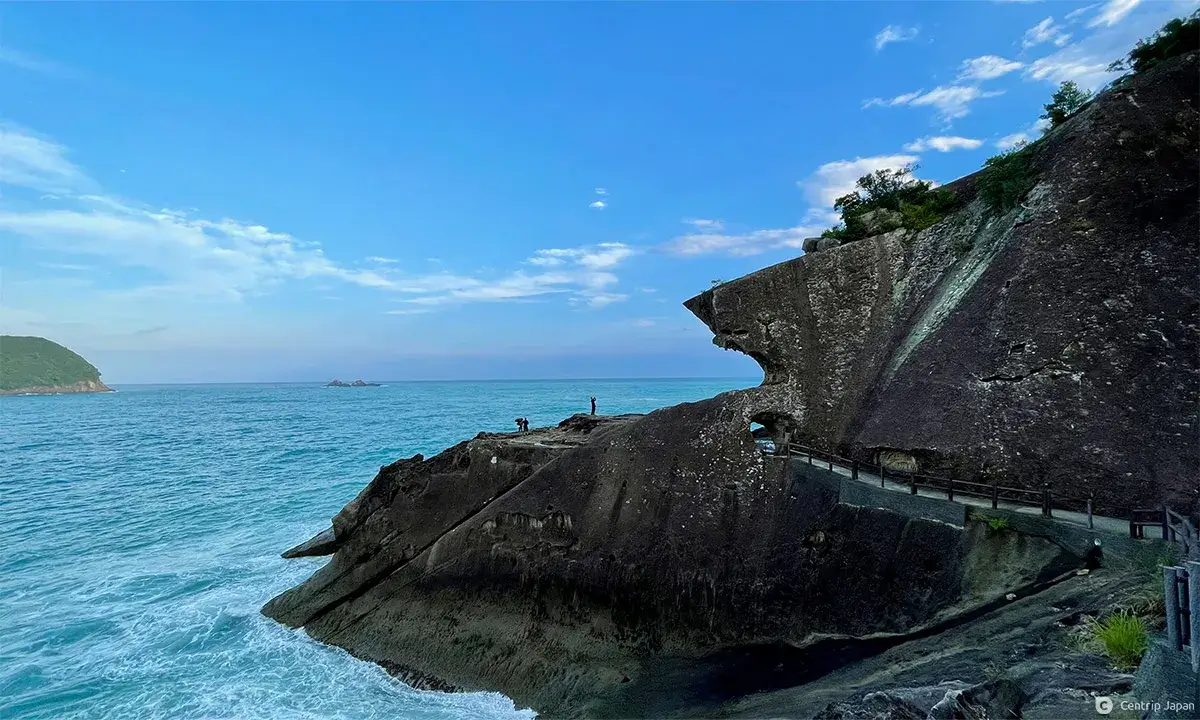 Art shaped by nature over time
Art shaped by nature over time
Oniga-jo is a scenic spot with oddly shaped rocks created by the erosion of waves and weather. Legend has it that the 15-meter-high cave, Senjoujiki, was once the home of pirates.
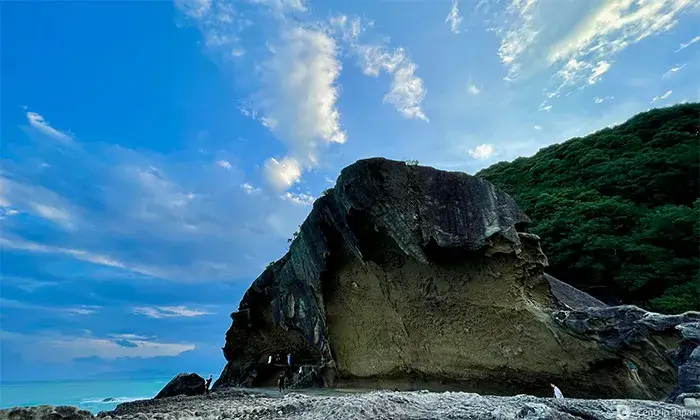 Senjoujiki
Senjoujiki
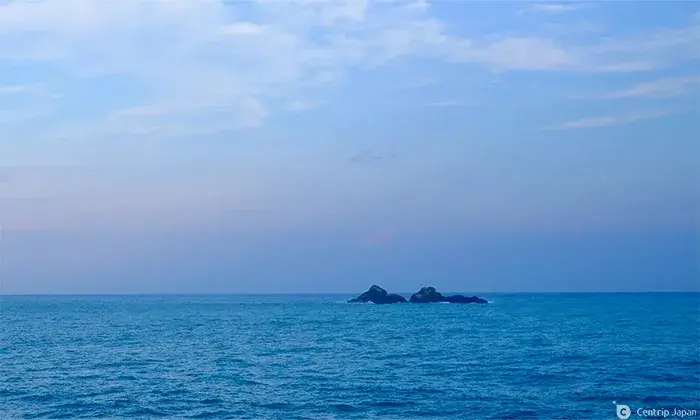 An uninhabited island about 1.5 kilometers off the coast, Mamiruga Island
An uninhabited island about 1.5 kilometers off the coast, Mamiruga Island
Beyond Senjoujiki, there is a 40-50 minute walk along the cliffs. It is quite a thrilling course, so please be careful if you are afraid of heights (it closes depending on weather or other conditions).
Shishiiwa
Leaving the parking lot of Onigajo Center and heading west along the coastline for about 1 km, you will see a huge-powerful rock that looks like a lion opening its mouth to the sea. This rock is the Shishiiwa, and legend has it that it was put here as a guardian dog for Omajinja Shrine, located several kilometers away.
 Like a lion roaring at the sea
Like a lion roaring at the sea
Hananoiwaya-jinja Shrine and Shichiri Mihama
About 500 meters west of Shishiiwa is Hananoiwaya-jinja Shrine, mentioned in the Chronicles of Japan, and is said to be the oldest shrine in Japan. The shrine has no "shrine," and an enormous 45-meter-high rock is enshrined here as the deity.
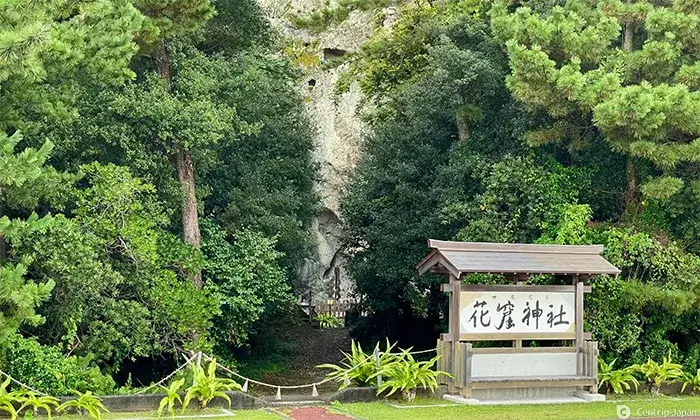 Hananoiwaya-jinja Shrine
Hananoiwaya-jinja Shrine
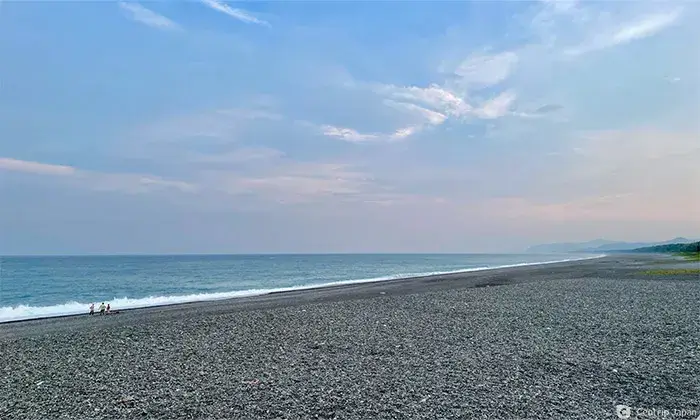 Shichiri Mihama in front of Hananoiwaya-jinja Shrine
Shichiri Mihama in front of Hananoiwaya-jinja Shrine
Hananoiwaya-jinja Shrine is famous for its rope hanging ceremony, in which a 170-meter long rope is lowered from a large rock and pulled to Shichiri-Mihama beach twice a year, on February 2 and October 2.
Maruyama Senmaida
After visiting all the sightseeing spots along the coast, visit Maruyama Senmaida, the best-terraced ricefield in Japan. It is a 30-minute drive from the Oniga-jo area.
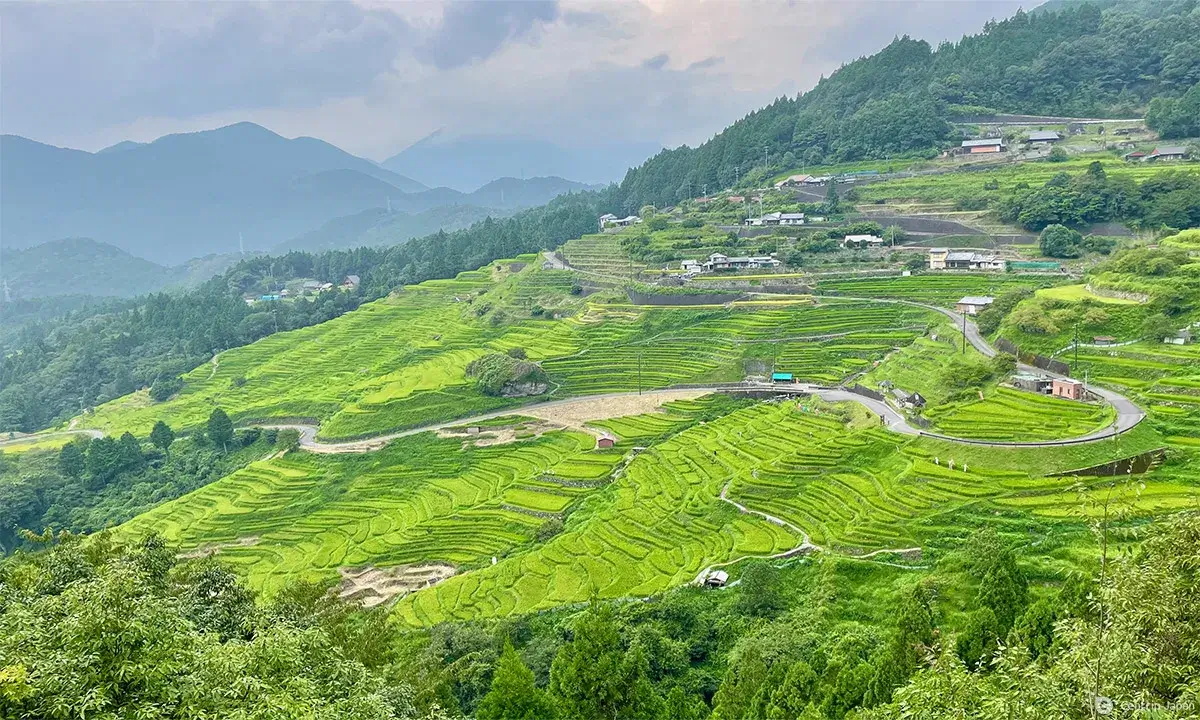 Maruyama Senmaida with 1,340 rice paddies
Maruyama Senmaida with 1,340 rice paddies
At Maruyama Senmaida, you'll see 1,340 small rice paddies in tiers up the slope, and the height difference of 160 meters creates an impressive and spectacular view. The number of rice paddies has been decreasing for a while, but local conservation efforts have halted it. While Oniga-jo and Shishiiwa are art created by nature, this is art created by people.
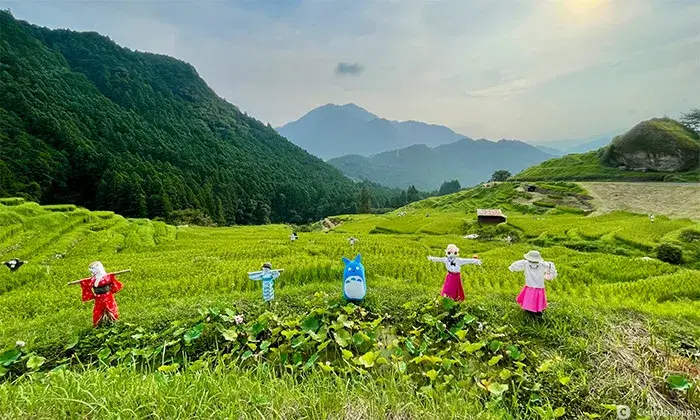 Cute scarecrows are guarding the rice paddies
Cute scarecrows are guarding the rice paddies
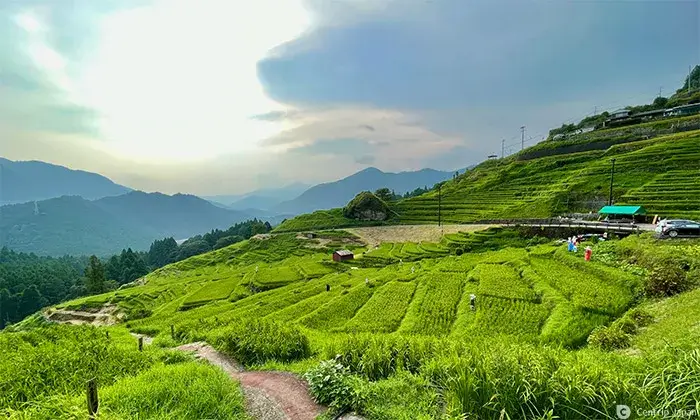 There is a viewing platform and parking space.
There is a viewing platform and parking space.
Kumano Gourmet: Sakanaya Shintaku
After a full day of sightseeing in Kumano City, enjoy seafood from the Kumano-nada Sea, a high-quality fishing ground.
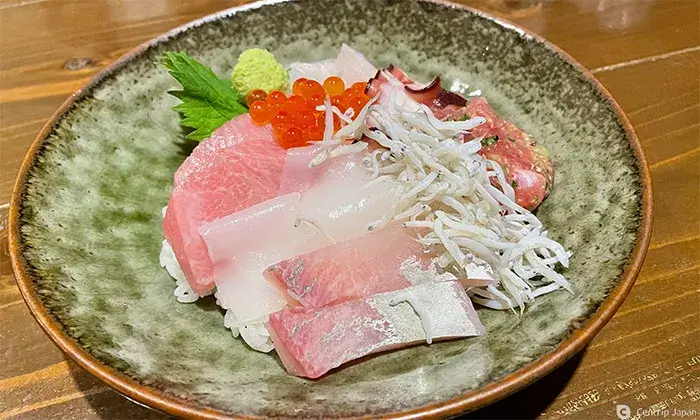 Popular Kaisen-don at Sakanaya Shintaku
Popular Kaisen-don at Sakanaya Shintaku
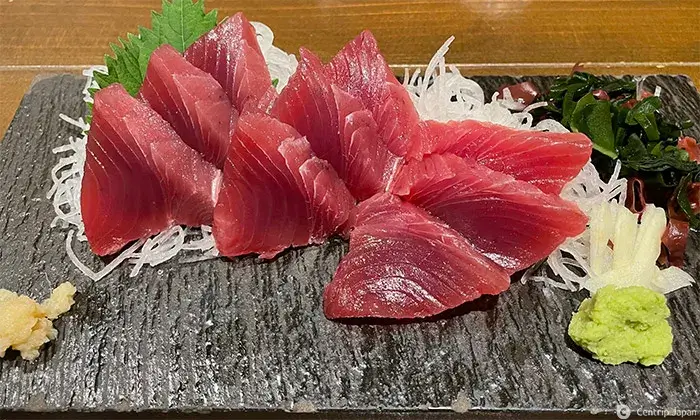 Bonito sashimi
Bonito sashimi
The top recommendation from locals is Sakanaya Shintaku. It is on the first floor of the business hotel Kawakami. It is an izakaya directly operated by a fish store with seasonal-local fish from Kumano. Since the restaurant is popular, it is best to reserve before visiting.
Directions from Nagoya to Kumano
By Car
The Kumano Odomari IC is reachable in about 2 hours and 30 minutes via the Ise Expressway, Kisei Expressway, and Kumano Owase Road from the Higashi-Meihan Expressway. From the Kumano Odomari IC to Onigajo Center, take a short drive via National Route 42.
By Train
From Nagoya Station, take the JR Kansai Line Main Line Wide View Nanki Limited Express bound for Kii-Katsuura, and arrive at Kumano City Station without changing trains. The trip takes about 3 hours. The nearest station for the east side of the Matsumoto-toge Pass is Odomari Station, one stop back on the JR Kisei Honsen Line from Kumano City Station.

Wrap-up
With the opening of the Kumano Owase Road, the city of Kumano is a short drive from Nagoya. Why not try walking the Kumano Kodo (Kumano old road) at Matsumoto-toge Pass and visit some of the city's most scenic spots? We also recommend you try driving in the Ise-Shima area and a tour of the three mountains of Kumano.
Click here to get the latest information on Central Japan.Centrip Japan - Nagoya and Chubu Information

